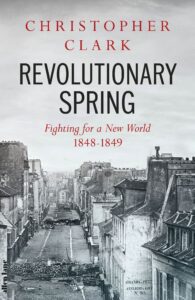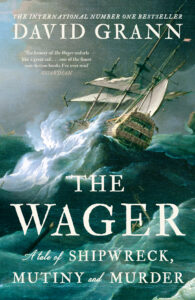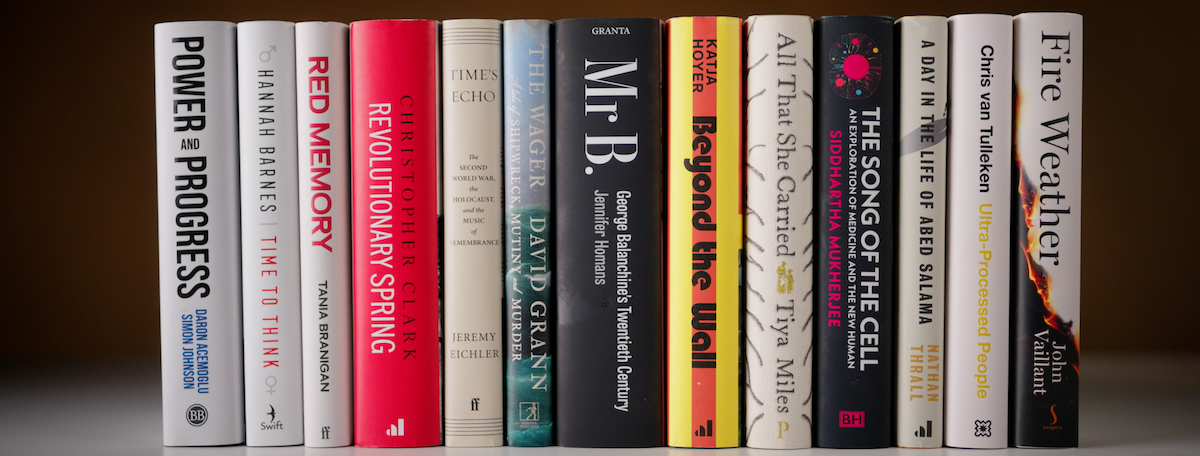This year’s longlist for the Baillie Gifford Prize spans the globe and spans centuries, encompassing a diverse selection of some of the best nonfiction published in 2023. With the help of archives and interviews, the books on this year’s longlist examine topics ranging from the Chinese Cultural Revolution to the impact of ultra-processed foods on human health. Below, the longlisted authors answer some of our questions and tell us a bit about their books and the research and writing processes that went into them.
*
Revolutionary Spring: Europe Aflame and the Fight for a New World, 1848-1849 by Christopher Clark

How did you conduct your research?
I read and read and read and read in books, newspapers, pamphlets, memoirs, and letters, until I could hear the voices of the people of 1848 as I went to sleep. The slowing of everything during the COVID pandemic enabled me to read more deeply and thoughtfully than would otherwise have been possible. The hardest part of the research was devising a narrative structure that would do justice to such a sprawling subject. I filled many A3 pages with swirls of scrawl before I found something that seemed to work.
What do you think is the most enduring moment from the tumultuous events of 1848 on Europe, and how it shaped the Europe we know today?
For those who took part in it the memories of the spring of 1848 lasted as long as life itself. The euphoria, the falling away of fear, the sense of history in motion, the experience of immersion in a collective self—decades later people could remember these moments as if they had only just happened. The parliaments and constitutions of 1848 are less deeply etched in European memory, but they were among the most durable legacies of the upheaval. Looking outside Europe, the formal abolition of slavery in the French Empire, an achievement of the Provisional Government established in Paris February 1848, created a new point of departure for the enslaved people of the French colonies, even if social and racial equality would take generations to accomplish.
In your exploration of the events of 1848 in Europe, which historical figures stood out as particularly significant or emblematic of the sweeping changes and challenges faced by societies during this period of upheaval?
Hundreds come to mind, but I was particularly struck by the women who wrote as witnesses of the events of 1848. Women were present everywhere in that year—as fighters on the barricades, as newspaper editors and as protestors on the streets of the European cities, yet they were excluded from the new ministries and parliaments (except as spectators in the galleries), denied the right to vote and barred from membership of most political clubs and associations. Perhaps for that reason, their writing on the events of that year is unique in its detachment, its willingness to grant all protagonists a share of the writer’s sympathy and to replace polemic with the balanced analysis of complex conflicts. Marie d’Agoult, Cristina di Belgiojoso, Eugénie Niboyet and Margaret Fuller (among many others) all embody these virtues.
The Wager: A Tale of Shipwreck, Mutiny and Murder by David Grann

How did you conduct your research?
I spent more than half a decade doing research, combing through archives. Miraculously, there is a wealth of documents, including logbooks and journals, that survived the disastrous expedition.
To better understand what the castaways had endured, I also made a trip, in a small wood-heated boat, to the remote island off the Chilean coast of Patagonia, where they had been stranded. The island remains wild and desolate, and after visiting it I could finally comprehend why a British officer had described it as a place where “the soul of man dies in him.”
What do you think motivated the thirty men who landed on the coast of Brazil to paint themselves as the heroes?
We all tend to shape our stories, trying to emerge as the hero of them. But for these men the stakes were existential. They faced the prospect of a court-martial for the crimes they had allegedly committed on the island. If they failed to tell a convincing tale, they could be hanged.
What does The Wager reveal about the complexities of human behavior and justice in extreme circumstances?
It highlights just how fragile the human condition is. The island where the castaways were marooned was like a laboratory testing them under brutal elements; inevitably, it would reveal the men’s true nature—both the good and the bad.
Beyond the Wall: A History of East Germany by Katja Hoyer

How did you conduct your research?
I was in a truly enviable position for a historian: I had millions of sources available to me. My subject, East Germany, still sits comfortably within the realms of living memory. Alongside documents, letters, memoirs and diary entries, I could tap into the minds and memories of the people who lived this history. The many interviews I conducted with former citizens of East Germany added a colorful array of nuances and anecdotes to a story that has often been depicted in black and white.
How did the forming of East Germany change the fabric of the nation’s identity?
The division of Germany into two states between 1949 and 1990 has carved a deep mark into the nation’s identity. Those forty-one years were longer than the eras of the First World War, the Weimar Republic and Nazi Germany combined. During those decades, Germans East and West of the Iron Curtain lived different lives while pointing a terrifying arsenal of weaponry at one another. Then in 1990, everything changed for East Germans while West Germans continued largely as before. These contrasting experiences continue to mark the political, economic and social landscape of Germany today.
Will we continue to see the impact of a divided Germany or is that all in the past now?
It was a mistake to assume that East Germans would naturally adopt the lifestyles, opinions and habits of their Western counterparts when their state disappeared virtually overnight on October 3, 1990. Neither were they immediately seen as equals or placed on a level playing field in terms of life chances and opportunities. Political fractures such as Germany’s reunification in 1990 make for convenient points on historical timelines, but they don’t reflect the realities lived by people whose life stories straddle them. The impact of Germany’s division will be with us for some time yet. Its rifts will take time and empathy to heal.


